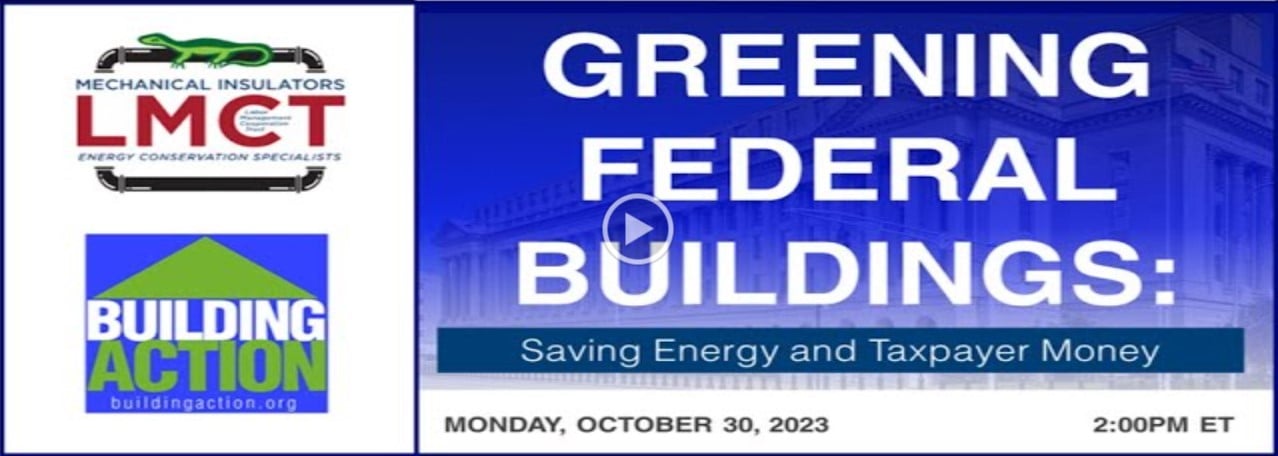On Oct. 30, the Mechanical Insulators Labor Management Cooperative Trust and BuildingAction hosted an online presentation to highlight the need to pass the Federal Mechanical Insulation Act, H.R. 4663.
The Greening Federal Buildings: Saving Energy and Taxpayer Money presentation explored how Mechanical Insulation Energy Audits can help the federal government reach its efficiency goals.
Reintroduced in July into the House of Representatives by Rep. Linda Sanchez (D-Calif.) and Rep. Randy Weber (R-Texas), the FMIA defines Mechanical Insulation in Section 432 of the Energy Independence and Security Act of 2007 (EISA). It also creates a statutory requirement for federal agencies to conduct energy and water use evaluations, which include energy audits, of federal buildings.
While Section 432 of EISA does not define “comprehensive energy and water evaluations,” Department of Energy guidance provides some guidelines for audits as part of these evaluations. Therefore, this legislation would clarify that Mechanical Insulation Energy Audits qualify under comprehensive energy and water evaluations for federal buildings.
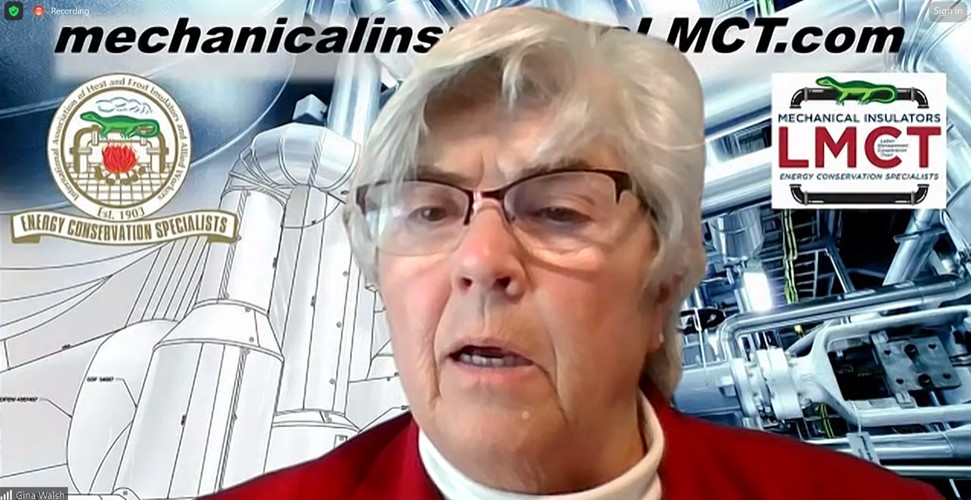 Moderated by LMCT Deputy Director Gina Walsh, speakers discussed the benefits of Mechanical Insulation and how the bipartisan FMIA can save significant taxpayer dollars while also helping reduce carbon emissions.
Moderated by LMCT Deputy Director Gina Walsh, speakers discussed the benefits of Mechanical Insulation and how the bipartisan FMIA can save significant taxpayer dollars while also helping reduce carbon emissions.
Former U.S. Rep. Russ Carnahan (D-Mo.), Chairman and Co-Founder of BuildingAction, spoke about his organization and its mission to create a broad network of partners to advance policies that transform America’s buildings as an essential component of U.S. sustainability and economic policy.
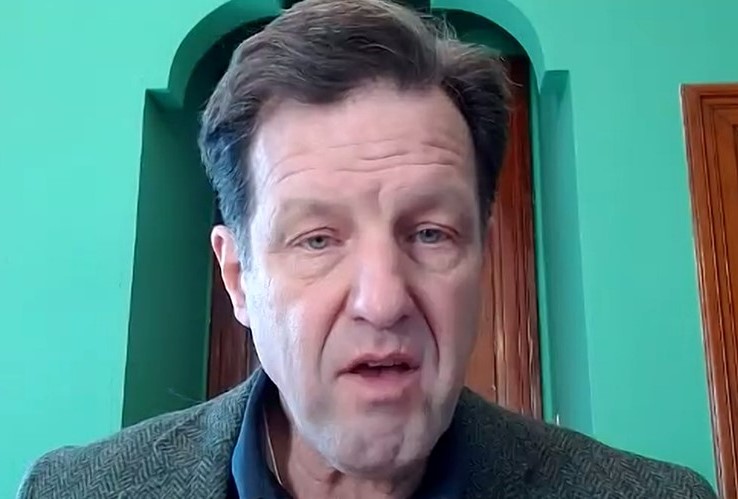 BuildingAction’s vision is to cut energy and water usage in America’s buildings in half by 2040, while creating millions of good-paying jobs, returning manufacturing back to the U.S. and reducing the impact of climate change.
BuildingAction’s vision is to cut energy and water usage in America’s buildings in half by 2040, while creating millions of good-paying jobs, returning manufacturing back to the U.S. and reducing the impact of climate change.
Following Carnahan were Bill Petty and Joseph Murrary of State Federal Strategies. Both Petty and Murrary worked with the LMCT to help get the FMIA reintroduced and are working to get it enacted.
“The bill gets right to the point of amending our current energy policy to include Mechanical Insulation to the every four-year energy audit,” Murrary said.
Currently, Mechanical Insulation is not part of the energy audit that is supposed to be performed every four years on all federal buildings. The FMIA seeks to change that and ensure Mechanical Insulation is included in all future audits.
“The bipartisan legislation is low-hanging fruit that the House floor and Senate should enact,” Murrary added.
Petty discussed the history of the Federal Mechanical Insulation Act and noted that H.R. 4663 only pertains to federal buildings.
He also spoke about a report released by the Government Accountability Office (GAO) in 2022 that revealed only one of 27 federal agencies had completed the mandated quadrennial energy audit.
“This shows the opportunity to help improve energy efficiency of over 350,000 federal buildings,” Petty said.
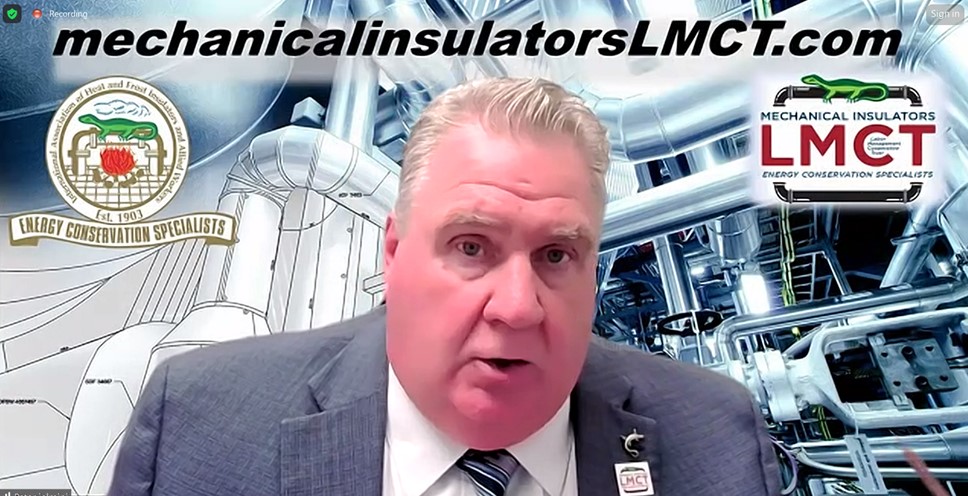 LMCT Executive Director Pete Ielmini thanked both Sanchez and Weber for their efforts and leadership as co-sponsors of the FMIA.
LMCT Executive Director Pete Ielmini thanked both Sanchez and Weber for their efforts and leadership as co-sponsors of the FMIA.
He explained that while Mechanical Insulation is out of site, it should not be out of mind.
“…Mechanical Insulation is a serious, energy efficient commodity that has to be addressed and be recognized,” he said.
According to Ielmini, the average building is missing anywhere from 10 percent to 30 percent of its Mechanical Insulation, costing the property owner significant money.
“That is the true value of H.R. 4663 by having Mechanical Insulation be inclusionary of energy audits that are performed on federal buildings,” he said. “This is low-hanging fruit that should impact the interests of economists, engineers and environmentalists. Without a doubt, Mechanical Insulation offers a return on investment in less than two years, and all of this can be proven with written engineered scientific data called the Mechanical Insulation Energy Audit.”
With the House in session, Sanchez and Weber could not take part in the meeting, but both recorded messages.
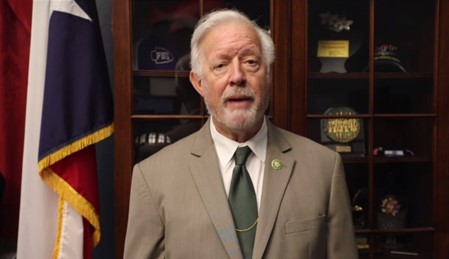
“For 35 years, I owned and operated an air conditioning company, and I understand the importance of strategic federal energy conservation and efficiency measures,” said Weber. “This bill is not only common sense but a win for the nation’s energy preservation and will lower the burden on taxpayers forking over their hard-earned dollars to power federal buildings.”
He added that this measure will help create jobs as 95 percent of all Mechanical Insulation is manufactured in the U.S.
Sanchez, who also introduced the FMIA in the previous congressional term, stressed the value of Mechanical Insulation.
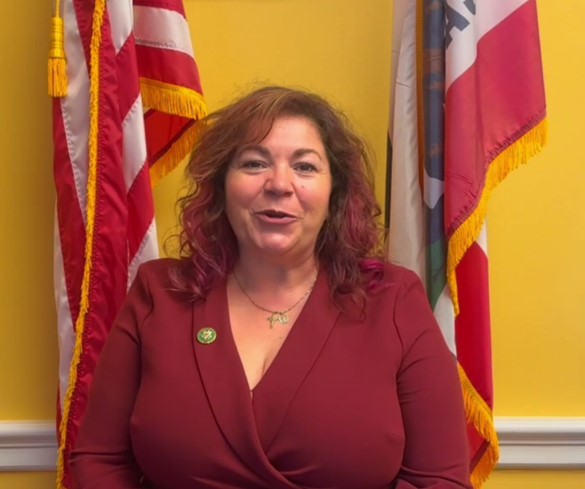 “Mechanical Insulation improves working environments, lowers energy costs and increases the asset value of a building,” she said. “It accomplishes all of this while creating tens of thousands of American jobs. This bill provides meaningful directives to the Department of Energy to ensure Mechanical Insulation is a focus of the statutory audits of federal buildings where appropriate.”
“Mechanical Insulation improves working environments, lowers energy costs and increases the asset value of a building,” she said. “It accomplishes all of this while creating tens of thousands of American jobs. This bill provides meaningful directives to the Department of Energy to ensure Mechanical Insulation is a focus of the statutory audits of federal buildings where appropriate.”
She noted that the Inflation Reduction Act and Infrastructure, Investment and Jobs Act should integrate a 21st century energy system and the lowest hanging fruit is energy efficiency through the use of Mechanical Insulation.
Jim Petrides, LMCT Senior Mechanical Insulation Specialist, provided a definition of Mechanical Insulation.
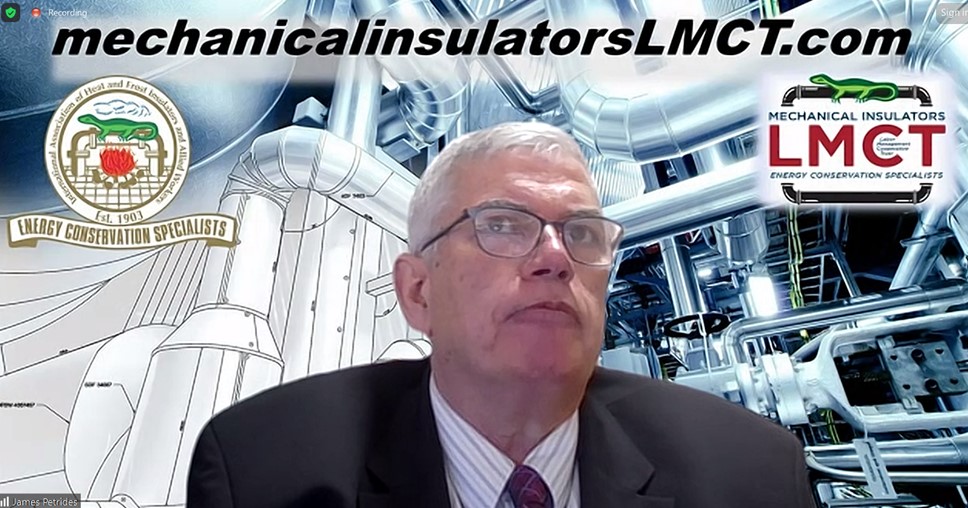 “It is installed on piping, duct and equipment to meet energy reduction, life safety requirements, personnel protection, freeze protection and process control requirements in commercial or industrial buildings,” he said.
“It is installed on piping, duct and equipment to meet energy reduction, life safety requirements, personnel protection, freeze protection and process control requirements in commercial or industrial buildings,” he said.
Petrides explained how a comprehensive Mechanical Insulation Maintenance and Upgrade Program in the commercial and industrial market would impact both energy and environmental concerns, while creating jobs.
He said such a program would save:
- $4.8 billion in savings per year
- Enough electricity to power 4.2 million homes for year
- Enough oil to fill 41 supertankers
- The amount of coal burned in power plants by roughly 190,000 railcars
The program would also eliminate enough carbon dioxide each year to meet the equivalent of:
- Adding a new forest the size of Connecticut and Delaware combined
- Removing 7.9 million cars from U.S. roads
- Shuttering 11 coal-fired power plants
The creation of a Mechanical Insulation Maintenance and Upgrade Program would also result in the creation of domestic jobs, as 95 percent of Mechanical Insulation is manufactured in the U.S. He estimated such a program could create:
- 89,000 total jobs for American workers
- Over 27,000 jobs for Mechanical Insulators and their contractors
Petrides also gave examples of how a Mechanical Insulation Energy Audit led one university in the U.S. to save over $800,000 per year once their mechanical system and pipes were properly covered.
Brian Clippinger, Director, Measurement and Verification at Energy Systems Group, uses Mechanical Insulation Energy Audits on all of his federal projects.
He spoke about his experience conducting Mechanical Insulation Energy Audits. His company works to make more resilient and energy-efficient buildings and guarantee the performance of those projects.
“We look for not always groundbreaking energy conservation measures, but ones that are true tested, and Mechanical Insulation is one of those,” Clippinger said. “Wasted energy is something we try to reduce right off the bat.”
Carnahan closed out the presentation by emphasizing that now is the right time to push this bipartisan measure.
Watch the entire presentation to learn more:
